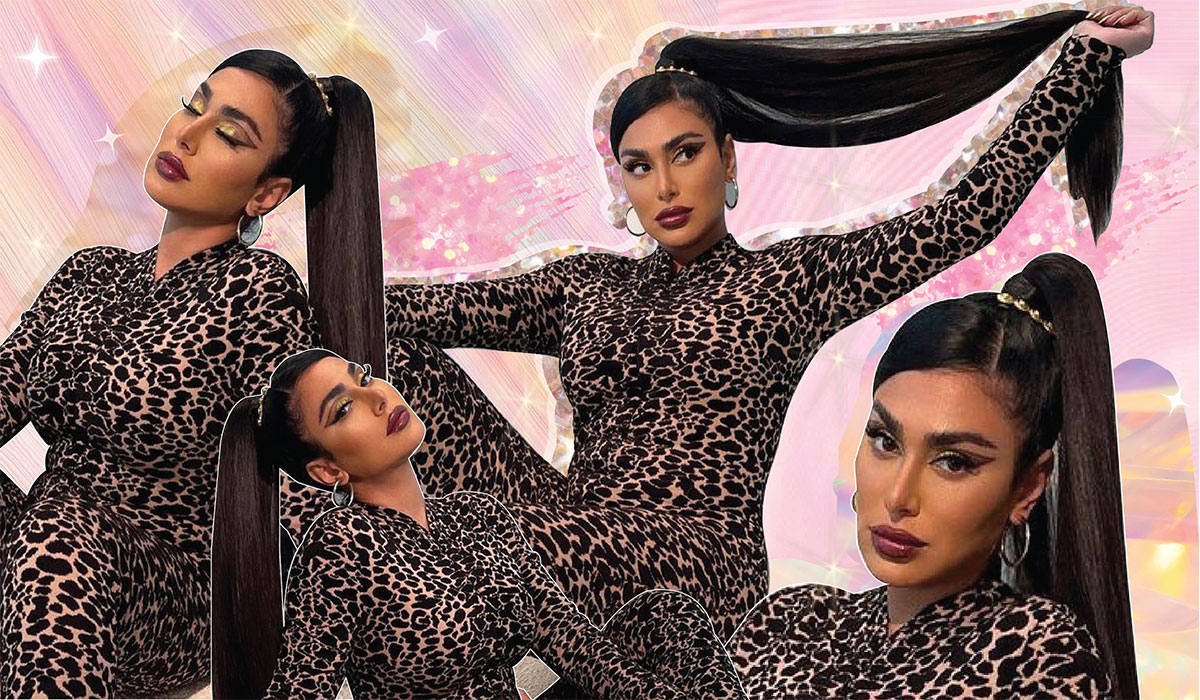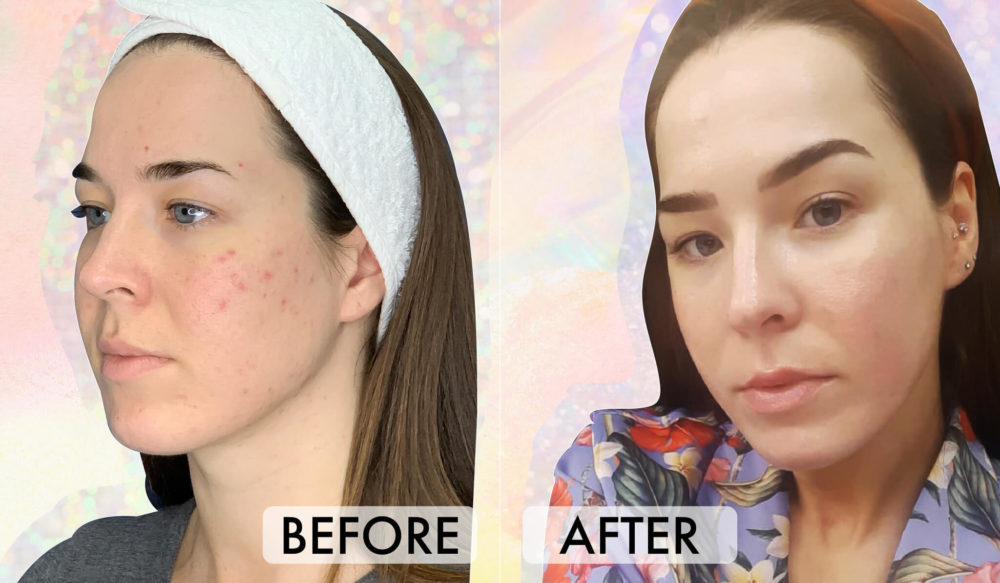Botox 101: Everything You Don't Know And Need To Know About Botox
 via Giphy
via Giphy
We all know someone who’s had Botox and come back looking like they just spent a month in a spa drinking collagen. At a glance, Botox seems like an incredible and immediate solution to fine lines and wrinkles, and with over six million Botox injections administered each year, it’s also one of the most popular cosmetic treatments out there. However, despite being tried and tested for over 20 years, there remains a ton of myths and misinformation about Botox, including the procedure and the risks. We’re here to put the rumors to rest and answer all your burning question about Botox with help from an expert. Here’re 15 things you need to know about Botox.
1. What is Botox?
It sounds way worse than it is, but Botox comes from a neurotoxin produced by Clostridium botulinum. A product of this nasty, natural forming bacterium is the Botulinum toxin, which is used in small doses to make things like forehead wrinkles disappear. Yep, super glamorous. Although it comes from rather gruesome origins, Botox (when handled by a trained professional) can alleviate a load of cosmetic and medical issues, from wrinkles to decreasing excessive sweating and reducing a ‘gummy’ smile.
2. How Do Botox Injections Work?
“For a muscle to move, a nerve has to release a signal called a neurotransmitter that signals the muscle. Botox depletes that neurotransmitter thereby inhibiting the muscle from moving,” Dr. Lily Talakoub of McLean Dermatology and Skincare Center told us. By blocking local nerve impulses to specific muscles within your face, albeit temporarily, Botox prevents you from having full control of your facial expressions, and therefore the wrinkles that come with it.
 via Giphy
via Giphy
3. Where Can You Get Botox Injections?
In the cosmetics world, Botox is most commonly used to treat, prevent and reduce the appearance of wrinkles and fine lines by relaxing the muscles. Key areas for injection as specified by the FDA are your forehead, crow’s feet around the eyes, and between the eyebrows. However, Dr. Talakoub also says she uses it to “soften neck lines, chin lines, to flip the lip up, to decrease lines around the mouth, jaw, and lift up the corners of the mouth. I also use it to thin the face, and to stop sweating under the arms, the hands, and feet.”
Botox before and after on the forehead:
Botox has also been used extensively to treat over 20 different medical conditions including eye squints, jaw tension, excessive sweating (by blocking the neurotransmitter that stimulates the sweat glands), migraines, dystonia (various involuntary muscle contractions or spasms), and even overactive bladders.
In this Botox before and after, Botox has been used to relax specific ‘smile’ muscles to reduce the amount of gum that shows when smiling:
4. Why Does Botox Appear to ‘Fill In’ Lines When it’s Not Actually a Filler?
“The muscles around your eyes, forehead and between the eyebrows form a wrinkle when they move. If the muscle is no longer able to move the same way, the wrinkle softens,” Dr. Talakoub explains.
5. HowMuch Botox Should You Have?
Of course, it varies from person to person, but the common industry average would be around 20 units for forehead wrinkles, and between two to ten units for crow’s feet. Dr. Lily Talakoub points out that “The depth of the lines are not the issue. The strength of the muscle determines how much you need.”
For minor forehead lines: “Usually 15-25 units are injected every 3 months.”
For deeper wrinkles: “25 units every 3 months.”
6. How Long Does Botox Take to Work?
Botox takes around 24 to 48 hours to kick in and results begin to appear within three to seven days. However, the full effects of Botox often won’t show until 10 to 14 days later.
 via Giphy
via Giphy
7. How Long Does Botox Typically Last?
Dr. Lily Talakoub tells us “Three months if the proper amount is used. It wears off sooner if the dose is too low,” however, we’ve typically found results can last up to six months. The results of Botox greatly depend on your body’s ability to metabolize the neurotoxin, so it will vary with each individual.
8. Can You Fix Bad Botox?
Unlike hyaluronic fillers that can be dissolved with an injection of hyaluronidase, if Botox goes wrong there’s no fix, you need to wait it out. And yes, you can have too much Botox!
9. How Long Does The ‘Frozen’ Effect Of Botox Last, And Can You Still Make Expressions?
“If botox is done correctly you can still make expressions and not be frozen. That is why it’s essential to see an expert. If too much is used or it’s put even a millimeter in the wrong direction it can change your expressions. That lasts usually 2-3 months,” Dr. Lily Talakoub says. So, even though certain nerves are “paralyzed” when Botox is injected, you will still smile, frown, and have expressions.

10. Can Using Botox On Your Forehead Cause Your Brows to Sag?
“Botox isn’t a one size fits all job, which means if it’s placed in the wrong area, you could risk negatively affecting other areas of your face. Dr. Talakoub explains: “Botox is part science but part art. That is why you should only see a board-certified dermatologist who has done thousands of these procedures. Everyone has a different eyebrow height and shape. Different arch and different lift of their eyebrows when they move their forehead. If botox is not done correctly the forehead muscles can relax TOO much, and the height of the brow can fall.” This means your brows will have a heavy look which could make you look tired, as many people naturally (and subconsciously) lift their brows.
11. The Amazing Unexpected Benefit of Botox:
We were beyond happy when Dr. Talakoub told us that as well as smoothing out wrinkles, Botox can even have a tightening effect on pores: “With my patients, the goal is that no one notices WHAT they’ve done. They just look fresher, more rested and their skin looks so much better, as a side note, softening the lines also decreases the pore size and makes makeup sit 100x better on the skin.” Amazing!
12. Are There Any Side Effects of Botox?
After the procedure, you may experience minor inflammation and redness of the treatment area or slight bruising, but this shouldn’t last long.
 via Giphy
via Giphy
13. How Much Does Botox Cost?
Botox is usually charged per unit, which averages around $10 to $20, so you could be looking at anywhere between $300 to $500 to have your forehead wrinkles done.
14. Does Botox Hurt?
We would compare having Botox to someone giving you a sharp pinch – it’s not pleasant, but the pain is gone in seconds. It’s like a small pin-prick! It’s definitely less painful than fillers or microblading.
15. Botox Myths, Debunked:
Myth 1. Botox is a filler: Fillers and Botox are different things. Fillers work to “fill” in lines and restore volume loss. Botox, on the other hand, works to relax the muscles that cause those lines.
Myth 2. You need to be older to have Botox: There is no set age for when’s a good time to use Botox for aesthetical reasons. However, more and more people are using it as a preventative measure in their early years to reduce the production of wrinkles and lines before they take hold. However, bear in mind that this is essentially an expensive way to keep wrinkles at bay – SPF is a much more affordable and very effective method of slowing down skin aging.
Myth 3. Botox trains muscles: This is kinda true! Because the muscles that cause wrinkles are relaxed, over time they lose their ‘strength’ and their ability to cause wrinkle-producing expressions. Imagine if you didn’t use your arm for a year, your muscles would shrink and become weaker. The prolonged use of Botox over years can have a similar effect, as the muscle will weaken from lack of use. However, if you go Botox cold turkey, over time, those weakened muscles will strengthen again.
Myth 4. Having Botox gives you good skin: Botox only effects the muscles it’s injected into, so your entire face will not freeze up. There are also no skincare benefits – having Botox will not improve pigmentation or reduce breakouts.
Let us know if you’ve tried Botox before and if you were happy with your results in the comments below.























Leave a comment